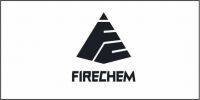 In the escalating battle against wildfires across America, leveraging cutting-edge technologies like drones has emerged as a critical strategy. Recognizing this urgency, the President’s Council of Advisors on Science and Technology (PCAST) has underscored the pivotal role of drones in augmenting firefighting capabilities. By acting as force multipliers, drones not only enhance operational efficiency but also provide vital real-time data to formulate proactive strategies in combating wildfires.
In the escalating battle against wildfires across America, leveraging cutting-edge technologies like drones has emerged as a critical strategy. Recognizing this urgency, the President’s Council of Advisors on Science and Technology (PCAST) has underscored the pivotal role of drones in augmenting firefighting capabilities. By acting as force multipliers, drones not only enhance operational efficiency but also provide vital real-time data to formulate proactive strategies in combating wildfires.
- Aerial Logistics: Enhancing Efficiency in Equipment Transport
A primary challenge during wildfire suppression is the swift and efficient movement of essential equipment and supplies. Drones equipped with advanced payload capabilities can play a pivotal role in swiftly transporting critical firefighting gear to strategic locations. This capability is particularly crucial during the initial attack phase when fires are most dynamic and unpredictable. By freeing up ground personnel from logistics tasks, drones enable firefighters to focus more effectively on containment and suppression efforts.
- Aerial Ignition: Precision Fire Management
Traditionally, firefighters manually execute fire breaks and backburns, critical strategies to control and prevent wildfires from spreading. Drones equipped with precision ignition systems offer a safer and more precise method to execute these maneuvers. By deploying incendiary devices from the air, drones can ignite targeted areas with accuracy, reducing the risk to ground personnel and optimizing resource allocation between active firefighting and preventive measures.
- Aerial Suppression: Deploying Fire Retardants with Precision
The rugged terrain and intense conditions of wildfires often limit the effectiveness of traditional firefighting aircraft. Drones, however, equipped with specialized technology for deploying fire retardants, offer a versatile solution. These unmanned systems can operate in challenging environments, including remote and hazardous locations inaccessible to larger aircraft. By carrying substantial payloads of fire retardant materials, drones significantly enhance the suppression capabilities, effectively complementing traditional aerial firefighting efforts.
- Aerial Mapping: Real-time Intelligence and Situational Awareness
Mapping wildfire perimeters and identifying hot spots are critical for effective firefighting operations. Drones equipped with advanced sensors, including thermal imaging cameras and LiDAR (Light Detection and Ranging), excel in providing real-time, high-resolution aerial maps. These maps not only aid in identifying fire dynamics and potential ignition sources but also assist incident commanders in allocating resources strategically. By enhancing situational awareness, drones empower firefighting teams to respond promptly and effectively to evolving fire conditions.
- Aerial Resourcing: Enabling Smart Firefighting Operations
Real-time visibility of firefighting resources is essential for efficient coordination and management. Drones equipped with IoT (Internet of Things) sensors and GPS tracking systems enable the creation of a comprehensive “smart fire” environment. These interconnected systems monitor the status and location of firefighters, equipment, and assets in real time, providing incident commanders with actionable data to optimize resource deployment. By enhancing operational transparency and safety, drones elevate the effectiveness of firefighting operations.
Challenges and Technological Advancements
Despite the promising capabilities of drones in wildfire response, several challenges persist. Technological limitations, such as payload capacity and endurance, pose constraints on drone operations in demanding wildfire environments. Innovations in drone design, including lightweight materials and advanced propulsion systems, are crucial to overcoming these limitations. Additionally, the establishment of robust infrastructure, including mobile landing and charging stations, is essential to support extended drone operations in remote areas.
Regulatory and Safety Considerations
The integration of drones into wildfire response operations necessitates adherence to stringent regulatory frameworks and safety standards. Current regulatory policies often lag behind technological advancements, requiring updates to accommodate the deployment of advanced drone systems in firefighting missions. Ensuring the reliability and redundancy of drone systems through rigorous testing and certification processes is paramount to enhancing operational safety and effectiveness.
Conclusion
As wildfires continue to pose significant threats to communities and natural landscapes, the imperative to harness innovative technologies like drones becomes increasingly evident. The evolution of drone capabilities—from aerial logistics and ignition to suppression, mapping, and resourcing—demonstrates their transformative potential in augmenting firefighting efforts. By advancing drone technology and addressing associated challenges, stakeholders can empower firefighters with enhanced tools and capabilities to combat wildfires more effectively and protect lives and properties.
In conclusion, the integration of advanced drone technologies represents a critical step towards enhancing the resilience and effectiveness of wildfire response strategies, underscoring the importance of continuous innovation and collaboration across the firefighting community.
















































